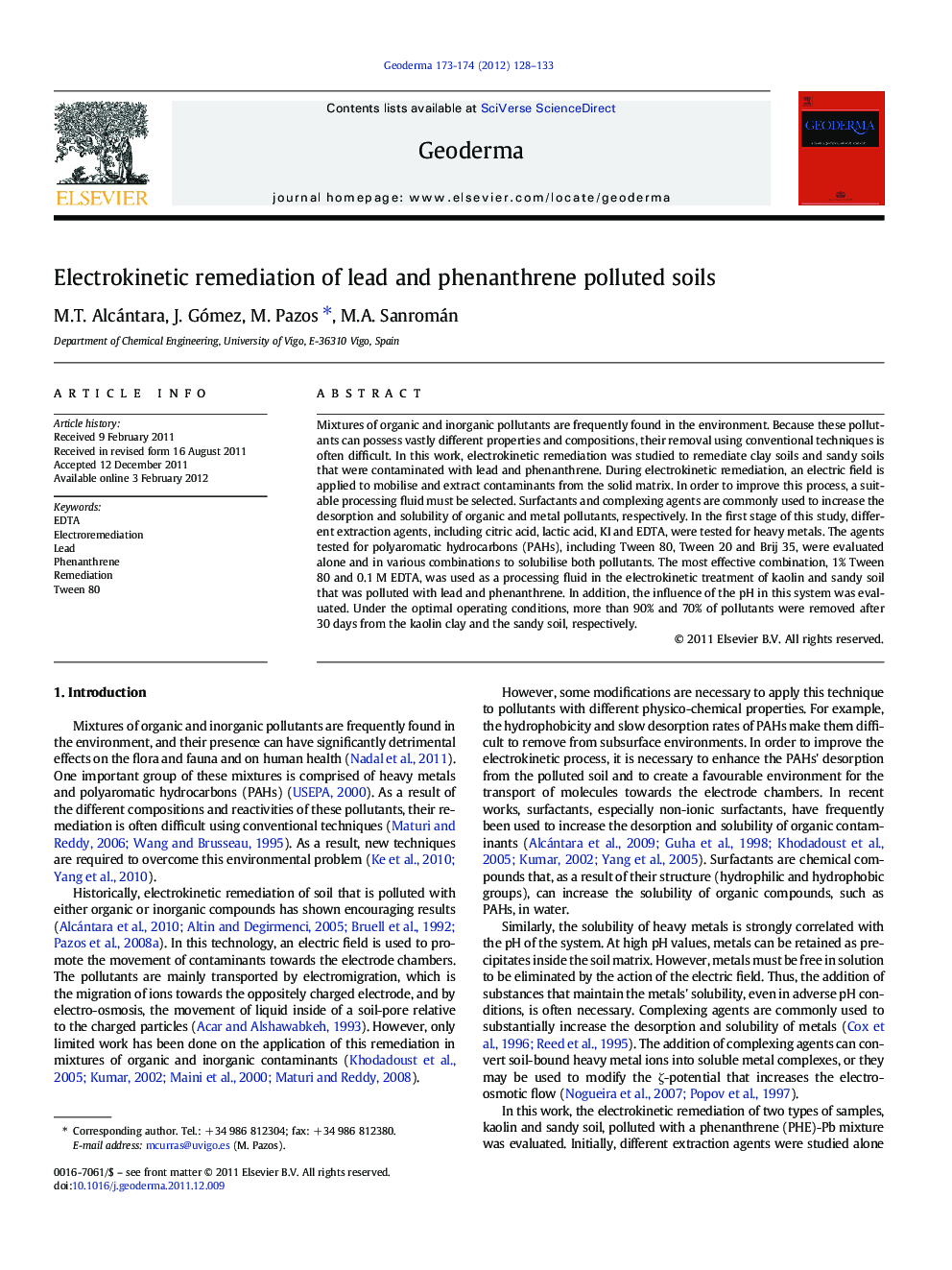| Article ID | Journal | Published Year | Pages | File Type |
|---|---|---|---|---|
| 4573942 | Geoderma | 2012 | 6 Pages |
Mixtures of organic and inorganic pollutants are frequently found in the environment. Because these pollutants can possess vastly different properties and compositions, their removal using conventional techniques is often difficult. In this work, electrokinetic remediation was studied to remediate clay soils and sandy soils that were contaminated with lead and phenanthrene. During electrokinetic remediation, an electric field is applied to mobilise and extract contaminants from the solid matrix. In order to improve this process, a suitable processing fluid must be selected. Surfactants and complexing agents are commonly used to increase the desorption and solubility of organic and metal pollutants, respectively. In the first stage of this study, different extraction agents, including citric acid, lactic acid, KI and EDTA, were tested for heavy metals. The agents tested for polyaromatic hydrocarbons (PAHs), including Tween 80, Tween 20 and Brij 35, were evaluated alone and in various combinations to solubilise both pollutants. The most effective combination, 1% Tween 80 and 0.1 M EDTA, was used as a processing fluid in the electrokinetic treatment of kaolin and sandy soil that was polluted with lead and phenanthrene. In addition, the influence of the pH in this system was evaluated. Under the optimal operating conditions, more than 90% and 70% of pollutants were removed after 30 days from the kaolin clay and the sandy soil, respectively.
► Electrokinetic remediation of Pb and phenanthrene from clay and sandy soils. ► Tween80 and EDTA were the best extracting agents. ► pH in the system was an essential variable to carry out an effective remediation.
